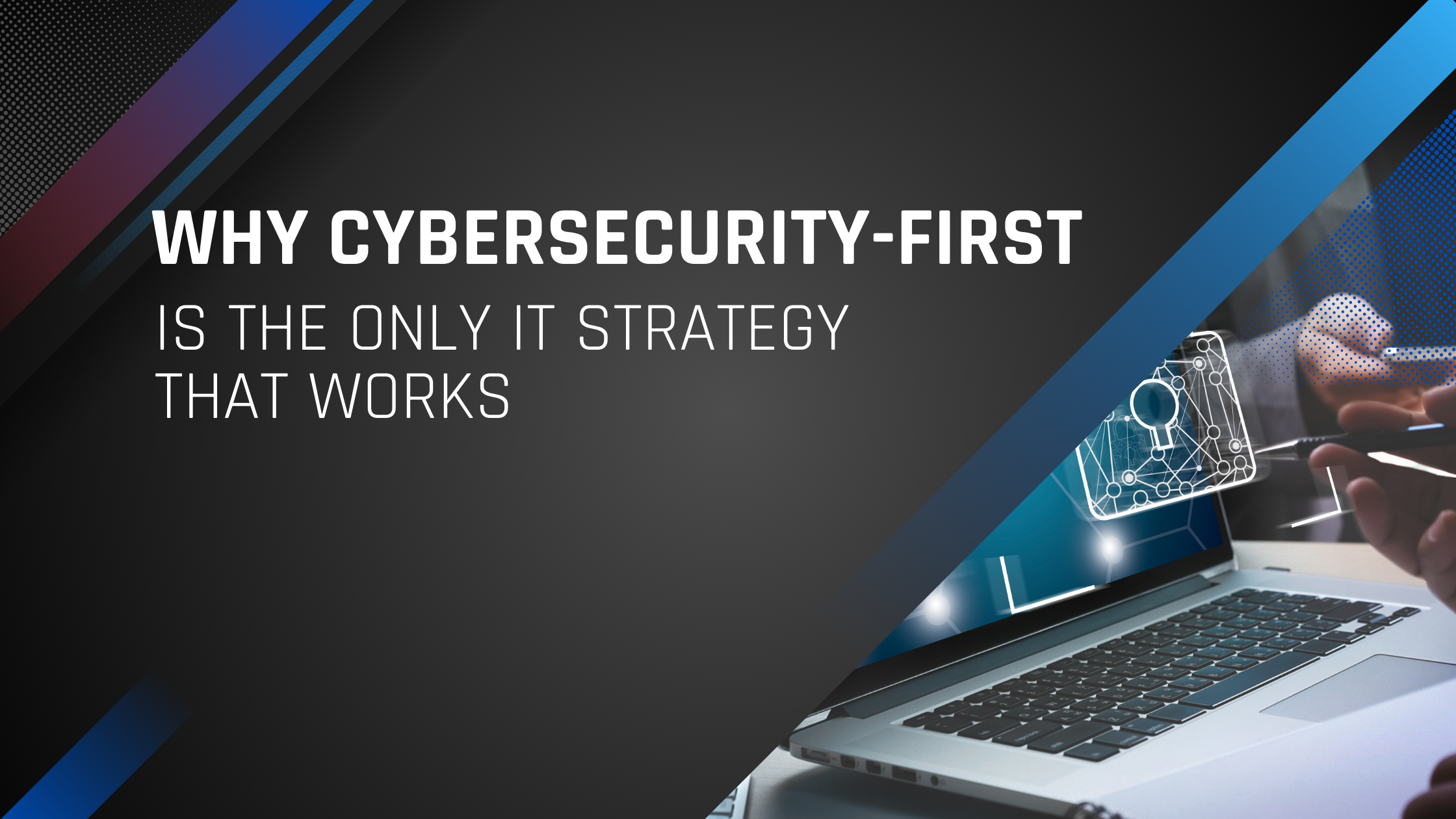The Add-On Mentality Is Putting Businesses at Risk.Most IT providers offer cybersecurity. You’ll find it listed alongside patching, monitoring, or cloud backups. But look closer, and what’s labeled “security” is often a tacked-on toolset or outsourced service with limited visibility. It’s reactive. It’s fragmented. And in a growing number of cases, it’s not working.Modern Business Runs on IT. And IT Can’t Run Without Cybersecurity.Every company today is tech-enabled. Files live in the cloud. Teams work across time zones. Systems power productivity, collaboration, billing, and reporting. If those systems go down, or worse, are breached, the consequences extend beyond IT.According to IBM’s 2024 Cost of a Data Breach Report, the average breach costs companies $4.45 million. That number includes everything from downtime and recovery to lost trust and regulatory fines. And the companies most often targeted? Small and mid-sized businesses. That figure accounts for more than just ransom payments or forensic cleanup. It reflects the cumulative cost of operational downtime, customer churn, legal exposure, and lost business. Alarmingly, nearly half of all attacks last year targeted small and mid-sized businesses.In a security-focused IT setup, risks are considered from the beginning. This means thinking carefully about who gets access, how devices are used, how networks are organized, and how recovery plans are made. Every choice (like picking software, setting up remote work tools, or deciding how often to back up data) looks at how it affects safety, responsibility, and the ability to bounce back. This way of working changes how a business grows. It also avoids the problems that come from treating IT, security, and compliance as separate things.Operational Resilience Starts with Embedded SecurityOne of the biggest misconceptions is that security slows companies down. In reality, well-implemented controls speed them up. They reduce risk without creating bottlenecks, and they make auditing, scaling, and workforce mobility easier.You shouldn’t have to wonder whether your backups are current. Or whether your remote team is creating vulnerabilities. Or whether your next compliance audit will reveal unknown issues. These shouldn’t be open questions. When cybersecurity is embedded into infrastructure, these concerns are addressed proactively, not reactively.The World Economic Forum’s Global Cybersecurity Outlook 2024 found that 91% of business leaders now rank cybersecurity as a top organizational priority.A cybersecurity-focused MSP helps you plan ahead. They assess your risks and goals, suggest fitting tech solutions, and assist in creating plans to keep your business running during issues. They keep you updated on compliance status and set up protections across cloud systems, devices, and user access to reduce risks. Importantly, they train your employees, as even with the best tech, one mistake by an untrained employee can cause problems.How to Begin Building Security Into Your FoundationEven without a full IT overhaul, there are meaningful steps companies can take to reduce their exposure and begin transitioning toward a security-first model. These are the non-negotiables:
1. Know Your Assets
Create a live inventory of all systems, devices, applications, and third-party platforms in use. You can’t protect what you can’t see.2. Assess Internal Risk
Run a gap analysis of your internal policies. Do you have MFA on all accounts? Are former employees fully deprovisioned? Is data segmented by access level?3. Establish a Patch Management Protocol
Unpatched software is one of the most exploited vulnerabilities in ransomware attacks. Updates must be prioritized by severity and tracked.4. Encrypt and Test Your Backups
Encryption is standard. Regular testing is not. If your backups haven’t been restored in the past 60 days, you don’t actually know they work.5. Train People Like They’re Your Front Line: Because They Are
One compromised inbox can cost a business millions. Phishing simulations, policy reviews, and security culture should be recurring, not annual.6. Monitor Everything That Moves
Basic antivirus is obsolete. You need behavior-based monitoring with alerting tied to critical systems and user actions.7. Align IT With Compliance and Legal Risk
Don’t treat compliance as separate from your technology stack. Security controls should reinforce legal obligations, not conflict with them.Each of these is a starting point, not a finish line. The goal is to make cybersecurity a normal part of operational thinking, not a hurdle to innovation.If your IT provider treats cybersecurity as a bolt-on, it may be time to revisit your strategy. Security should not be something you add. It should be something you build on.→ Learn more about Systech MSP’s Managed IT Services → Explore our Cybersecurity Solutions → Or schedule a consultation to assess how your current setup supports (or weakens) your security posture.

